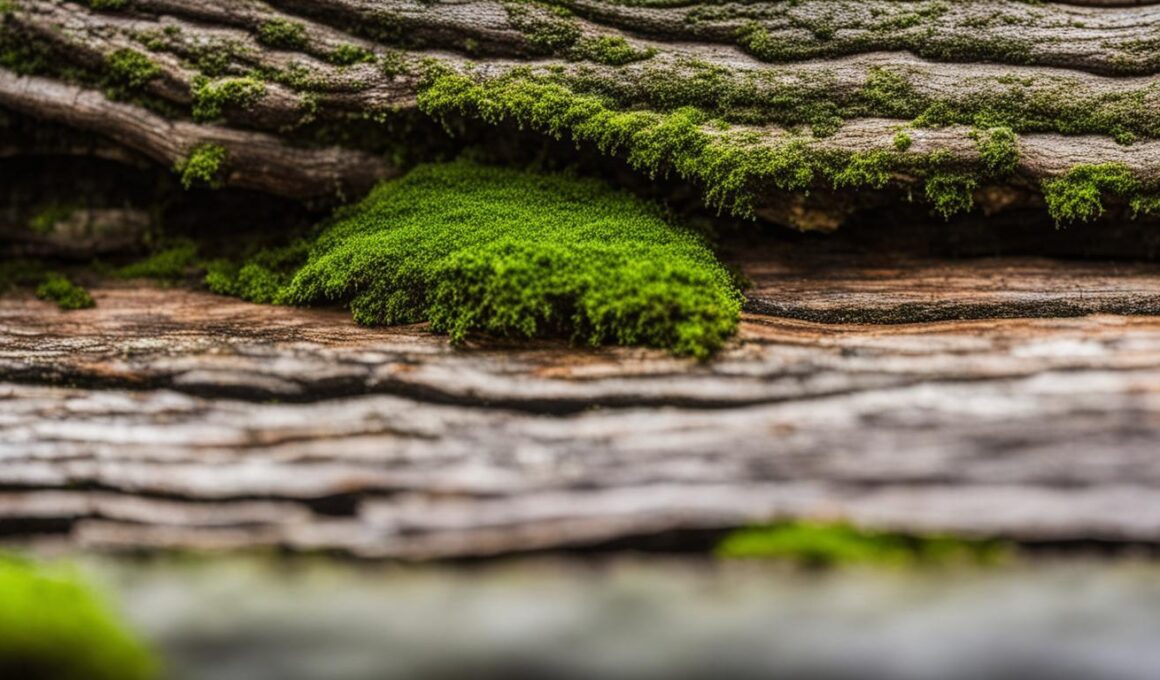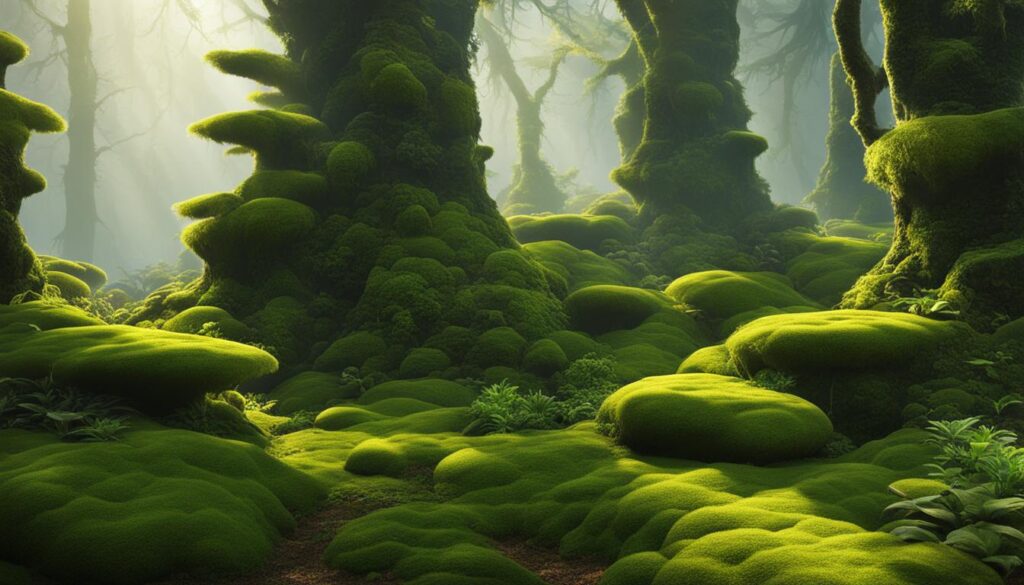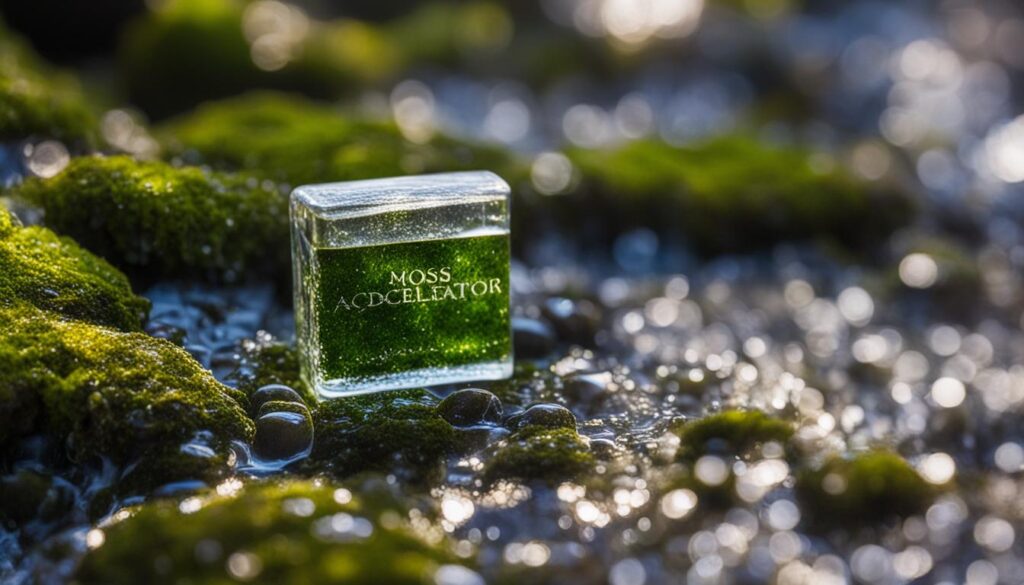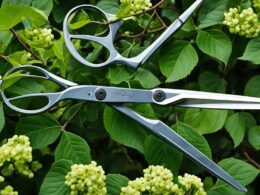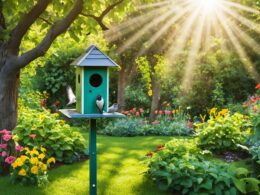Have you ever wondered how fast moss grows? Moss, with its unique charm and lush green appearance, has fascinated nature enthusiasts for centuries. Whether you have a moss-covered garden or are considering cultivating moss in a vivarium, understanding its growth rate is essential to provide the optimal conditions for its flourishing. In this article, we will delve into the factors that influence moss growth rate and explore tips for promoting faster growth. So, let’s dive in and uncover the secrets of moss growth!
When it comes to determining the growth rate of moss, it’s important to consider various factors. Moss growth rate can vary depending on the type of moss and environmental conditions. Factors such as water availability, light intensity, temperature, and substrate play a significant role in its growth. Different types of moss also have varying growth rates, from a few inches per month to several centimeters per year.
Factors Affecting Moss Growth
Moss growth is influenced by various factors that contribute to its development and overall health. Understanding these factors can help you create the ideal conditions for optimal moss growth in your garden or indoor spaces.
The type of moss plays a significant role in its growth rate. Different moss species have varying growth patterns and requirements. Some moss species may thrive in certain conditions, while others may require specific environmental factors to flourish.
Water availability is crucial for moss growth. Moss requires moist conditions to absorb water and nutrients effectively. A consistent water supply ensures that moss remains hydrated and promotes its growth. However, excessive moisture can also impede moss growth, as it can lead to fungal infections or prevent oxygen from reaching the moss.
Light intensity is another important factor. Moss tends to grow faster in shaded areas with moderate to cool temperatures. Direct sunlight can cause moss to dry out quickly, limiting its growth potential. Providing the right balance of light and shade is essential for optimal moss growth.
Temperature plays a significant role in moss growth. Moss thrives in cooler environments, with temperatures ranging from 50°F to 75°F (10°C to 24°C). Higher temperatures can hinder moss growth, as they can cause the moss to dehydrate and become dormant.
The type of substrate or growing surface also affects moss growth. Moss requires a suitable surface to attach itself and gain stability. Surfaces such as rocks, logs, or soil provide a conducive environment for moss to establish and grow. Additionally, the substrate should retain moisture and provide adequate drainage.
To create favorable conditions for moss growth, ensure that the environmental conditions, including water availability, light intensity, temperature, and substrate type, align with the specific requirements of the moss species you are cultivating.
Moss Growth in Different Environments
Moss, known for its lush and vibrant appearance, can be successfully grown in a variety of environments. Whether you have a yard, an aquarium, or a vivarium, moss can find its place and add a touch of natural beauty to your space. The versatility of moss allows it to be transplanted onto different surfaces, including soil, rocks, and even bricks.
When it comes to moss growth, the specific environment and surface play a crucial role. Factors such as moisture, light, temperature, and other environmental conditions affect the success of moss growth. Proper understanding and management of these elements can help you create the ideal conditions for moss to thrive.
Ambient moisture is one of the key factors that influence the growth rate of moss. Moss tends to flourish in environments with moderate to high humidity levels, where moisture is readily available. Light intensity is another important consideration, as moss generally prefers shaded areas with moderate to cool temperatures. These conditions mimic the natural habitats where moss typically thrives.
Aside from moisture and light, the type of surface or substrate also affects moss growth. Moss can attach itself and grow on various surfaces, taking hold and establishing its presence. Different surfaces, such as soil, rocks, or bricks, offer unique growing conditions that can impact the growth rate and overall health of the moss.
By understanding the specific needs of moss and tailoring the environment to meet those needs, you can successfully cultivate and enjoy the beauty of moss growth in different environments. Whether you are fostering a tranquil aquatic ecosystem or creating a serene miniature garden, the lush greenery of flourishing moss can transform your space into a natural oasis.
Different Types of Moss and Their Growth Rates
When it comes to moss, there are various types, each with its own unique growth rate. Understanding these growth rates can help you choose the right moss for your specific needs. Let’s take a closer look at some popular types of moss and their growth rates:
Java Moss
Known for its vibrant green color and delicate appearance, Java moss is a popular choice for aquariums and terrariums. This type of moss has a relatively faster growth rate compared to others, making it a great option if you’re looking to create lush greenery in your aquatic or land-based setup.
Spanish Moss
Spanish moss (Tillandsia usneoides)
Native to warm and humid climates, Spanish moss exhibits a unique draping growth habit. This air plant thrives in shaded areas with high humidity levels. As a hanging moss, it adds a touch of elegance to trees and structures. Spanish moss also has a relatively faster growth rate, making it a versatile and visually appealing choice for both indoor and outdoor displays.
Irish Moss
For those seeking a lower-growing moss option, Irish moss (Chondrus crispus) fits the bill. This type of moss has a moderate growth rate, forming dense mats of green foliage. Irish moss is often seen in rock gardens, where its compact growth habit and tolerance for partial shade make it an excellent ground cover choice.
Christmas Moss
Christmas moss (Vesicularia montagnei)
If you prefer a slower-growing moss that requires less maintenance, Christmas moss is a great pick. This moss species has a moderate growth rate, allowing it to maintain its shape and form over time. Its intricate branching structure resembles a miniature Christmas tree, hence the name. Christmas moss is commonly used in aquascaping, adding a natural and captivating touch to aquarium landscapes.
It’s important to note that the growth rate of moss can vary depending on several factors, including the environmental conditions and care provided. Moss growth rates can range from a few inches per month to several centimeters per year.
To create a visually appealing display in your aquarium, terrarium, or outdoor space, consider choosing moss species with growth rates that align with your desired outcome. Experimenting with different types of moss can add depth, texture, and natural beauty to your chosen environment.
Tips for Growing Moss Faster
To improve the moss growth rate, follow these helpful tips to provide optimal growing conditions:
- Provide adequate lighting: Moss requires sufficient light to thrive. Place it in a location that receives indirect or filtered sunlight, or use artificial lighting if growing indoors.
- Maintain proper water parameters: Moss prefers moist but not waterlogged conditions. Avoid overwatering as it can lead to fungal growth and rot. Regularly check the moisture level of the moss and adjust watering accordingly.
- Supplement with necessary nutrients: Moss derives nutrients from its surroundings. If the growth rate is slow, consider using a moss-specific fertilizer to provide additional nutrients and promote faster growth.
- Regular misting: Moss benefits from regular misting to maintain high humidity levels. Use a fine mist sprayer to lightly mist the moss and its surrounding area, ensuring it doesn’t become saturated or waterlogged.
- Choose appropriate substrate: The choice of substrate can impact moss growth rate. Opt for a substrate that retains moisture well, such as peat moss, or use materials like rocks or driftwood that can retain moisture and provide a suitable surface for moss to attach to.
- Maintain high humidity levels: Moss thrives in high humidity environments. Consider using a humidity tray or misting the surrounding area to maintain a humid environment for faster moss growth.
By implementing these tips, you can enhance the growth rate of your moss and enjoy a lush and vibrant environment. Experiment with different techniques to find what works best for your specific moss variety and environmental conditions.
Moss Growth in Vivariums
Moss can thrive in vivariums, providing a lush and natural aesthetic to your enclosed ecosystem. However, proper acclimation is crucial for the long-term success of moss growth in vivariums.
During the acclimation period, it is important to mist the moss regularly. This helps simulate the humid conditions that moss naturally thrives in. By providing adequate moisture, you create an environment that promotes healthy growth.
Appropriate lighting is another crucial factor in moss acclimation. Vivariums should have suitable light intensity and duration, imitating the natural light conditions that moss would encounter in its native habitat. This helps ensure optimal photosynthesis and growth.
Additionally, choosing the right substrate is essential for moss growth in vivariums. The substrate acts as a base for the moss, providing stability and a source of nutrients. Opt for a substrate that retains moisture well and allows the moss to anchor securely.
Vivariums with high humidity levels, consistent temperature, and proper lighting can create ideal conditions for moss growth. By replicating the natural habitat of moss within the vivarium, you are more likely to achieve successful and flourishing moss growth that adds a beautiful and natural touch to your enclosed ecosystem.
Does Low Light Conditions Affect the Growth Rate of Moss?
Moss, known for its clover shade tolerance thriving in low light, generally thrives in low light conditions. While it may not grow as quickly in comparison to brighter environments, low light won’t necessarily stunt its growth. In fact, many species of moss are well-suited for shade and have adapted to these conditions.
Conclusion
After exploring the factors affecting moss growth, it is evident that the rate of moss growth can vary significantly. The type of moss, environmental conditions, and substrate all play important roles in determining how quickly moss can thrive. By providing optimal conditions, such as adequate light, moisture, and nutrients, you can help promote faster moss growth.
Understanding these factors and implementing appropriate care techniques can result in lush and vibrant moss growth in various environments. Whether you are growing moss in your yard, aquarium, or vivarium, it is essential to create environments that mimic natural habitats and cater to the specific needs of the moss species.
By maintaining suitable humidity levels, ensuring proper lighting, and choosing the right growing surface, you can enhance the growth rate of moss. Regular misting, proper acclimation in vivariums, and supplementing with necessary nutrients are other effective ways to encourage faster moss growth.
In conclusion, moss growth is influenced by numerous factors, but with the right care and attention, you can create optimal conditions for moss to flourish. By implementing the insights gained from understanding these factors, you can cultivate vibrant and thriving moss in your desired environment.





